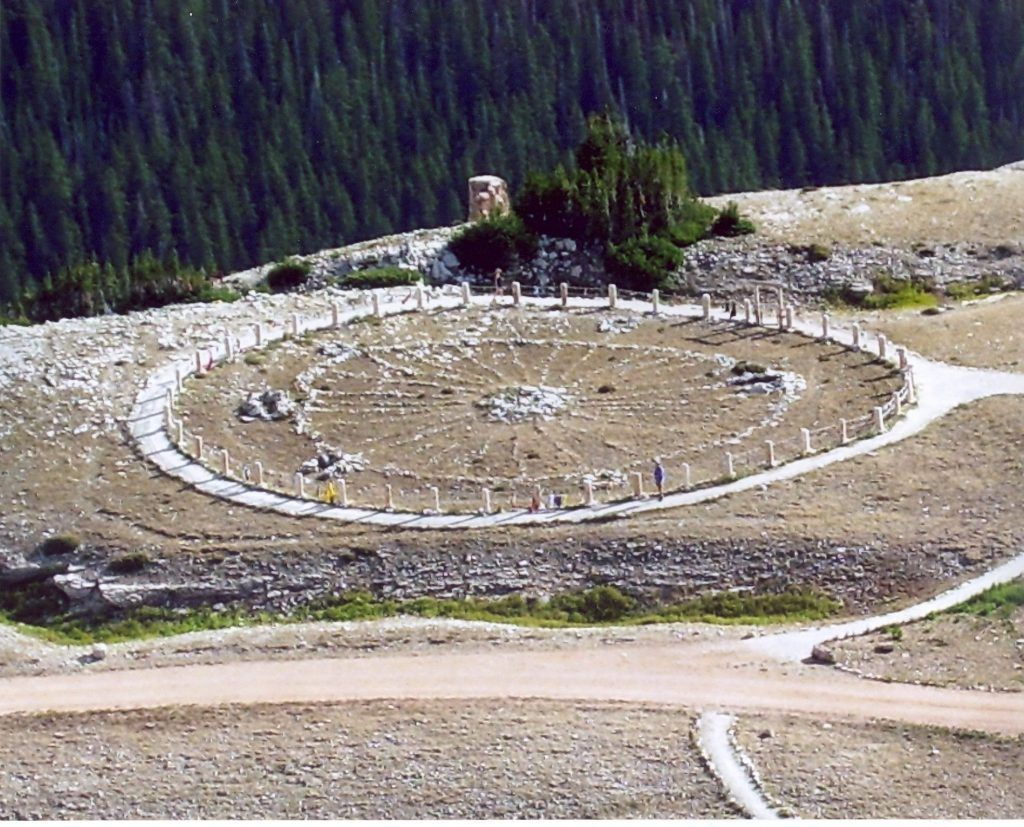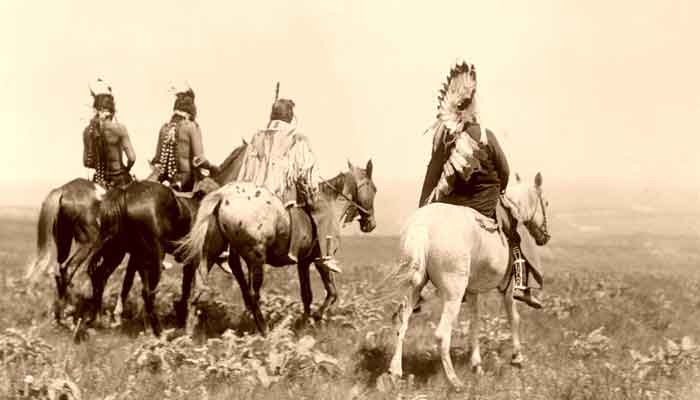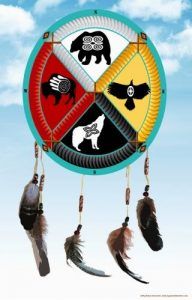
Bighorn Medicine Wheel courtesy Wikipedia
Lying at an altitude of 9462 feet near the summit of Medicine Mountain in the Bighorn National Forest of north-central Wyoming is the Bighorn Medicine Wheel.
The Pre Columbian structure is made of local white limestone laid upon a bedrock of slightly sloping limestone. It is 82 feet in diameter, includes 28 spokes extending from the center to the rim, and a series of seven stone circles (cairns) – six at or near the rim and a larger (12 foot in diameter) cairn in the center.
Age estimates for the Medicine Wheel range from a few hundred years to more than 3,000 years, though the cultural history of the Big Horn Mountains dates back over 10,000 years. Oral histories provided by Native Americans indicate the Medicine Wheel is indeed very old, extending back in time through many generations. The only reliable scientific date gleaned from the Bighorn Medicine Wheel thus far is one tree-dating sample derived from wood incorporated into the structure of the western cairn. This sample’s latest growth ring dates to 1760 CE. Artifacts and other archaeological evidence clearly indicate that the Medicine Wheel has been visited by Native Americans for nearly 7,000 years.
No indigenous people have publicly claimed to have built the Big Horn Medicine Wheel. The Crow people have stated that the Wheel, which rests within their homeland, was already present when they came into the area. Oral history from several indigenous nations sets the Bighorn Medicine Wheel as already existing, having been built by “ancient ancestors”.
It is both a place of sacred ceremony and scientific inquiry.
For centuries, the Bighorn Medicine Wheel has been used by Crow youth for fasting and vision quests. Various other tribes, including the Arapaho, Bannock, Blackfeet, Cheyenne, Crow, Kootenai-Salish, Lakota Sioux, Plains Cree, Shoshone, and other tribes also go to Bighorn to offer thanks, pray for healing, and other tribal ceremonies.
Native American spiritual practices prescribe traditional uses in distinct portions of the landscape, including areas for staging, approach, ceremonies, prayer, and vision questing, camping, and medicinal plant gathering. Native American ethnographic accounts refer to the Medicine Wheel as the “altar” for the Medicine Mountain complex, illustrating the important central role the Wheel plays in ceremonial and spiritual functions.
In the 1970s, Astronomer John Eddy also noticed that some of the wheel’s spokes pinpoint the direction of the sunrise on different solstices, and other spokes mark the rising point of other stars, suggesting the site may have once been an observatory. It’s still a mystery, though, who first built the wheel.
Though numerous medicine wheels have been discovered in North America, the Bighorn Medicine Wheel is the largest.
The site, previously known as Bighorn Medicine Wheel, was listed as a National Historic Landmark in August 1970 and was renamed Medicine Wheel/Medicine Mountain National Historic Landmark in 2011.
The National Historic Landmark is comprised of 4,080 acres that includes a high concentration of integral natural formations and vistas that are perceived as cultural features, traditional use areas, and associated archaeological sites, including the Medicine Wheel.
The Medicine Wheel is an active Native American sacred site, so please be respectful during your visit. At times, the site may be temporarily closed to visitation for private Native American ceremonies. If a ceremony is taking place during your visit, please stay back from the participants and observe quietly.
To visit, take Medicine Wheel Passage, 32 miles east of Lovell, Wyoming on U.S. Highway 14a, then about 1.5 miles northwest on Forest Road 12 to parking area and gate. There is about a two-mile walk from the parking area. It is open during daylight hours only from mid-June through mid-September.
Compiled by Kathy Alexander, updated March 2020.
Also See:
Medicine Wheel & the Four Directions
Native Americans – First Owners of America
Native American Rituals and Ceremonies
Sources:
Travel Wyoming
U.S. Forest Service
Wikipedia
Wyoming History


